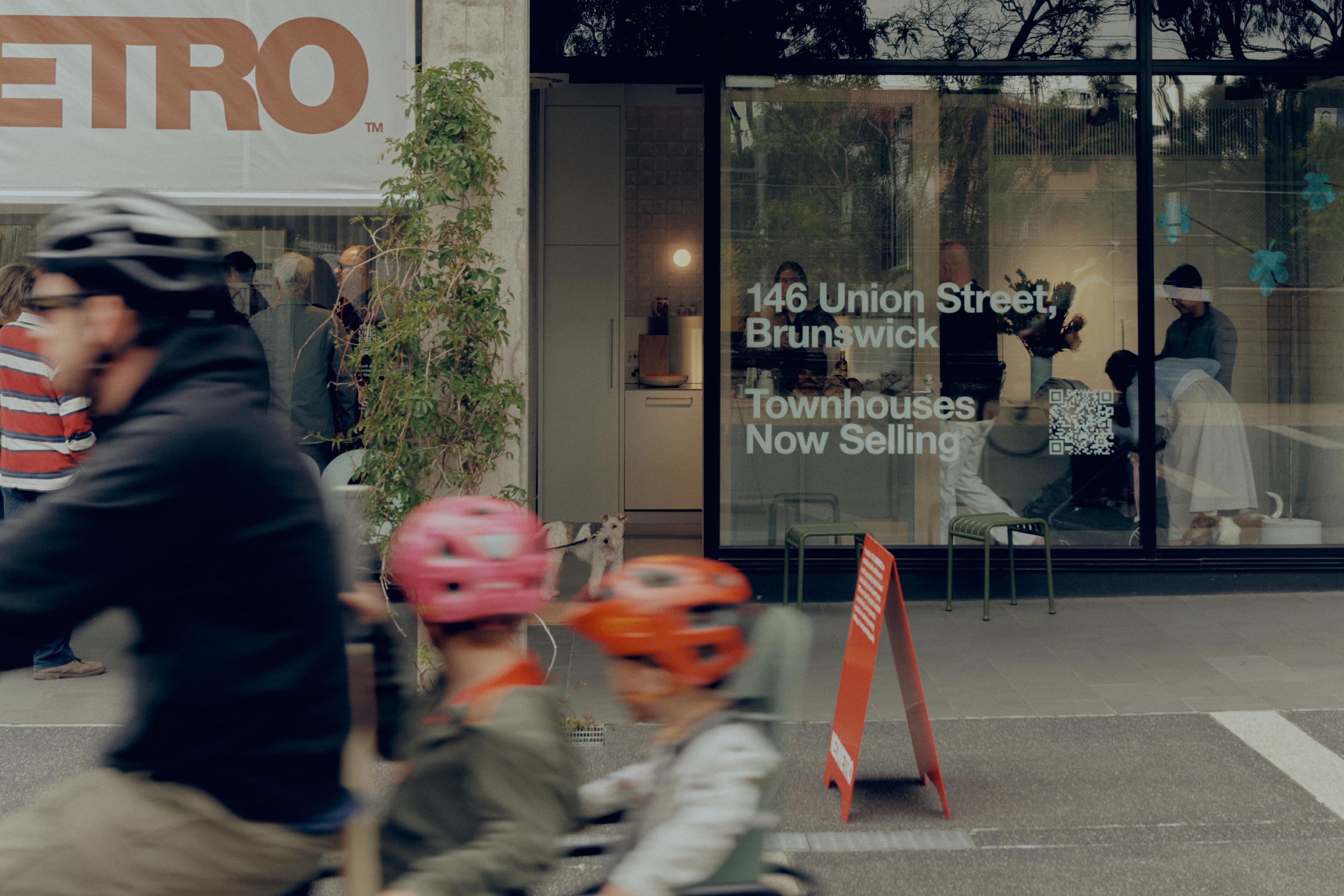✴Events
❉Dialogue
IN CONVERSATION WITH ADAM GOODRUM
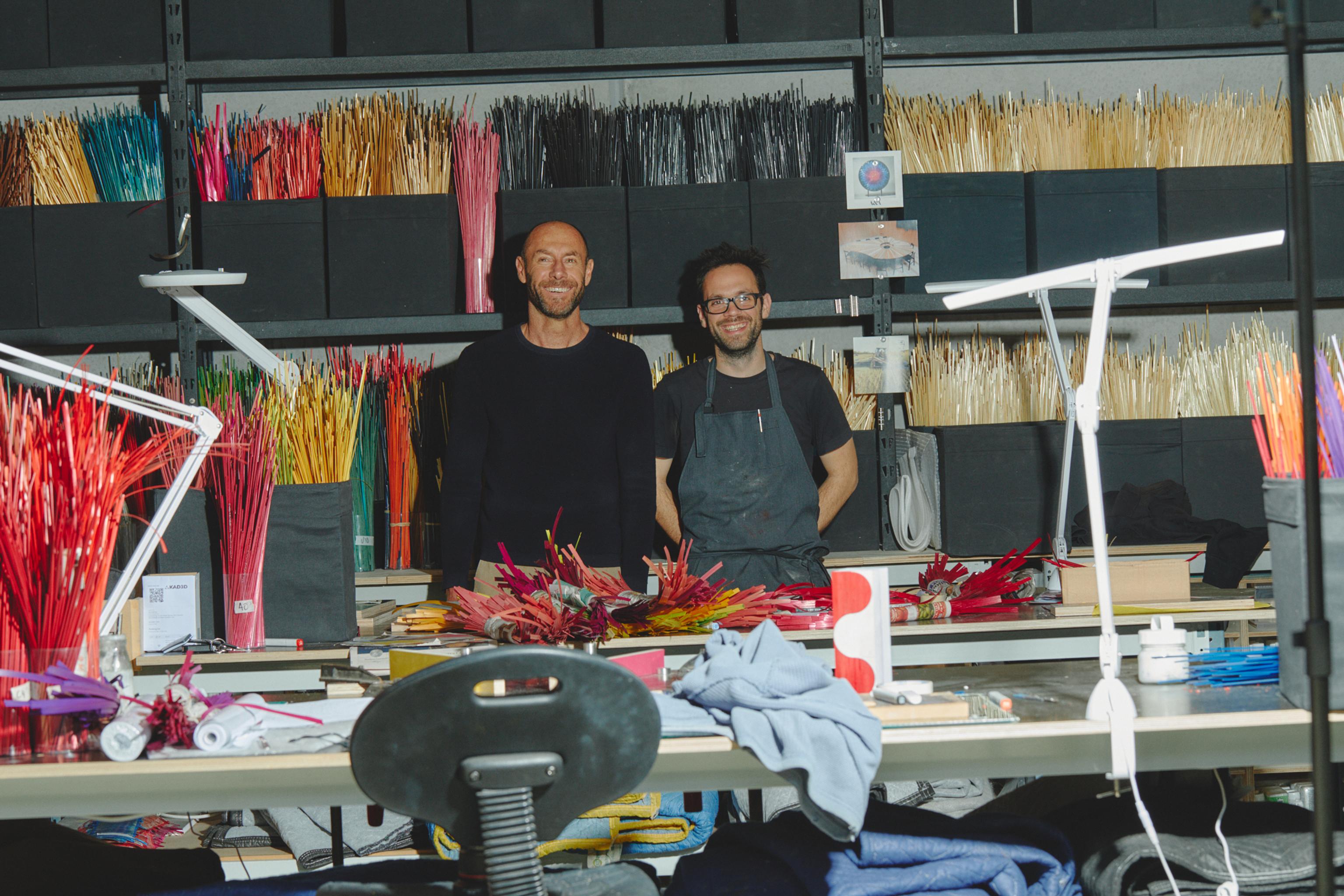
Adam Goodrum and Arthur Seigneur of Adam & Arthur (A&A) have forged a partnership that renders creative outcomes of astonishing artistry. In fusing Adam’s industrial design proficiency with Arthur’s eminent straw marquetry and cabinetry-making skills, the duo has realised an ever-evolving body of work that is as striking as it is singular. As the recipient of this year’s Melbourne Design Week Award, writer Tiffany Jade chatted with Adam about his and Arthur’s 7-year collaboration and their extraordinary Kissing Cabinet.
Open Journal (OJ): Congratulations on Melbourne Design Week! On the award, your launch of 'Billo’ and the incredible Kissing Cabinet.
Adam Goodrum (AG): Thank you. Arthur and I were so thrilled. It was totally unexpected. I think it’s the first time the award has been announced that publicly. I have a studio in Sydney and Arthur works from Melbourne so we were really grateful to come together at Revival Projects and then the NGV and be acknowledged in that way.
OJ: How often do you get down here or Arthur up there? It must make collaborations interesting…
AG: Oh, I’m down in Melbourne a lot. Particularly before Melbourne Design Week. I was there every week trying to get the Kissing Cabinet finished. And then, if I’m not down there, we pretty much speak every day. It’s a close collaboration.

A&A ‘The Kissing Cabinet’ 2024, image courtesy of Tolarno Galleries.
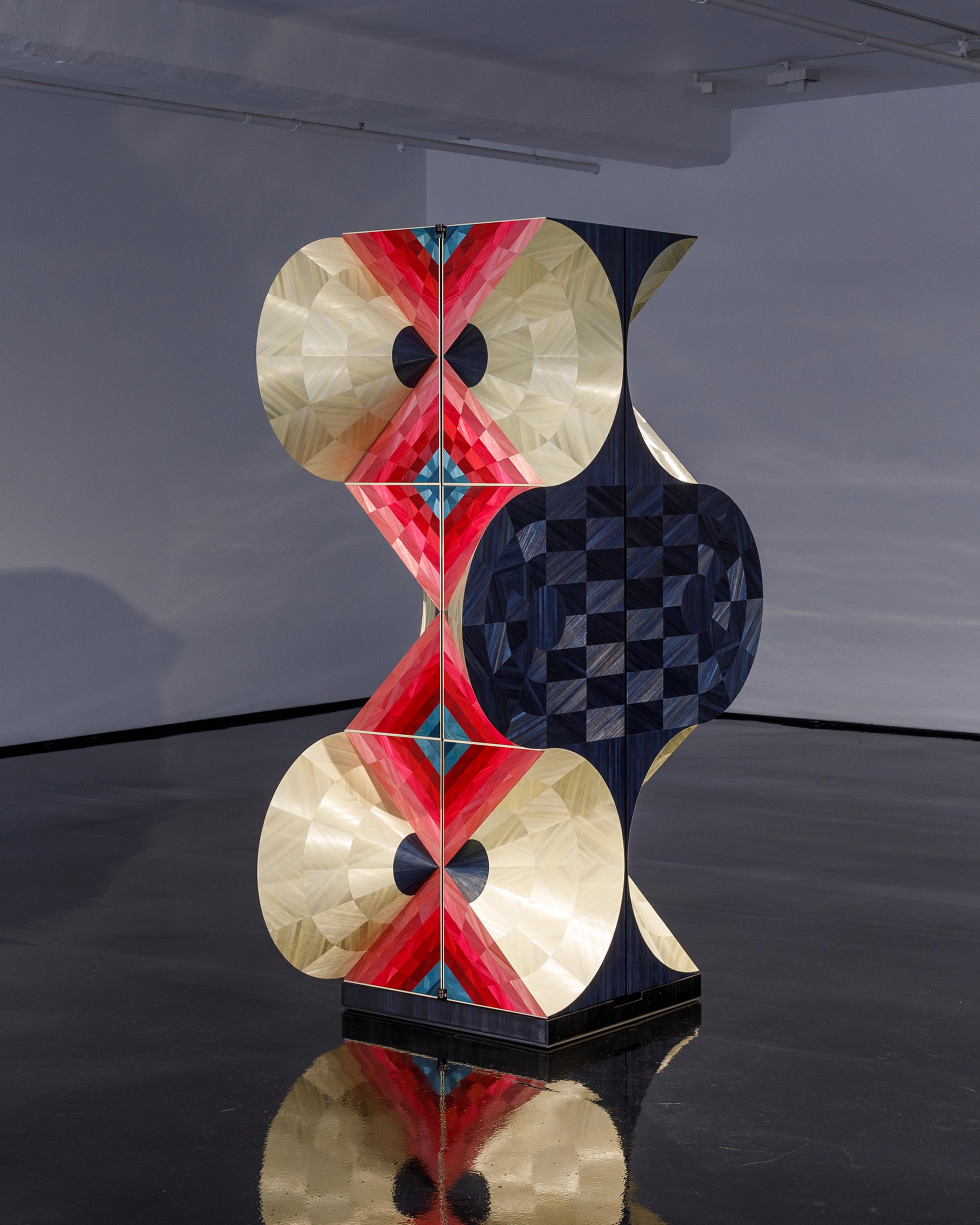
A&A ‘The Kissing Cabinet’ 2024, image courtesy of Tolarno Galleries.
OJ: How did the collaboration come about? Did you guys know each other beforehand or were either of you actively seeking collaboration?
AG: Before we met, about seven years ago, I had my own studio and independently collaborated with companies. But I hadn’t creatively collaborated with anyone before. And then Arthur, who’s French, was in New Orleans when he met an Aussie girl and then moved to Australia with her and happened to set up a studio in a co-op only a few hundred metres away. He just reached out one day. He’d noticed I was a furniture maker, he told me he was from France and practised straw marquetry which I’d never heard of before. He rocked up with some samples, we had a coffee and that was it.
Back then, Cult was running a program called The Chairity Project where they’d pick a number of creatives who were assigned an iconic chair from one of the brands they represented to do whatever they wanted to it. That redesigned chair was then auctioned to raise money to support a cause. I called Arthur, to see if he was interested in collaborating on a Series 7 Arne Jacobsen chair. So we did a piece with that. It was fun working together and we got a great outcome.
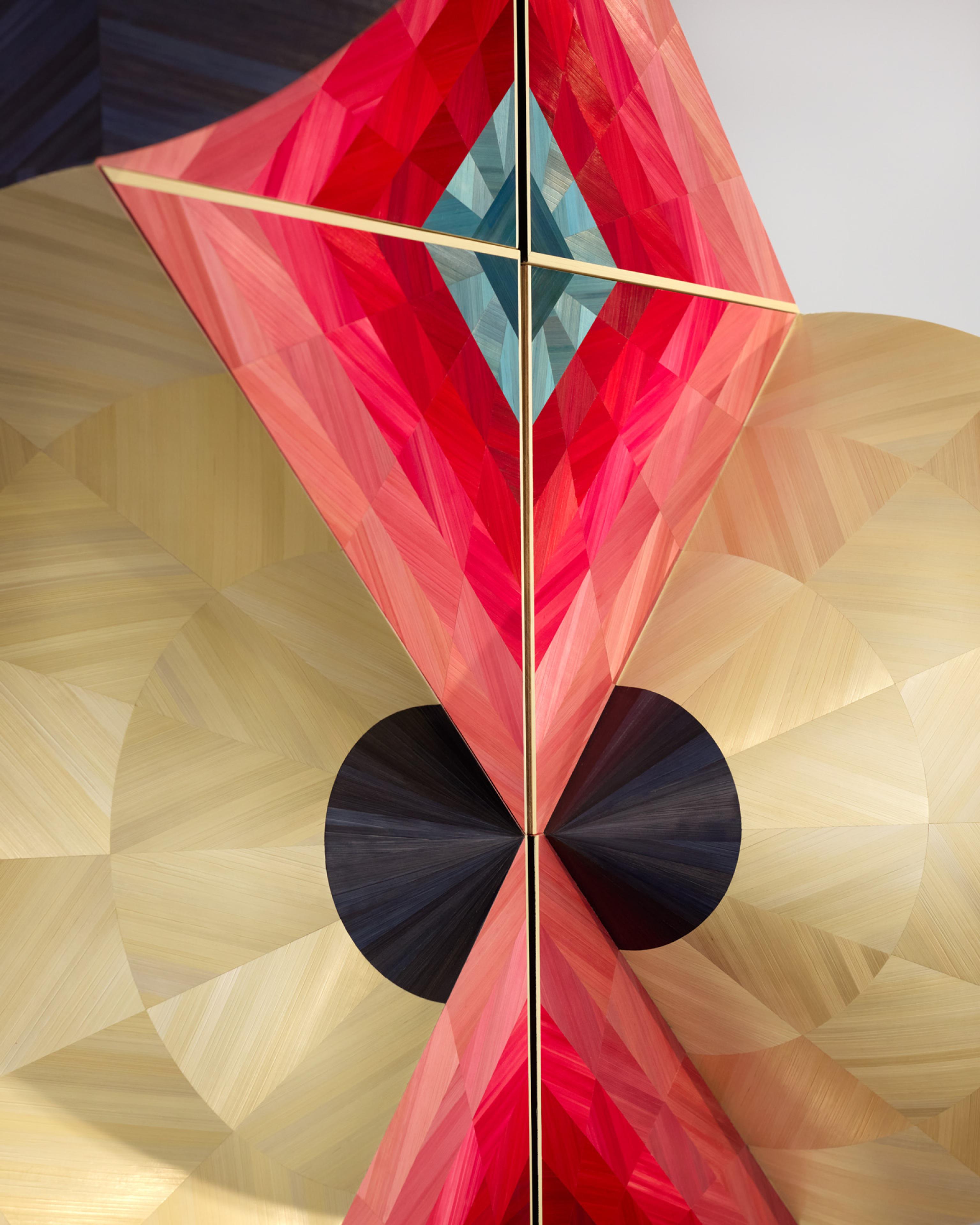
A&A ‘The Kissing Cabinet’ 2024, image courtesy of Tolarno Galleries.
OJ: Did that chair incorporate the straw marquetry Arthur excels at?
AG: Totally! Arthur is a professionally trained straw marquetry artisan. Back in France, he was taught by Lison de Caunes who is renowned for the technique. We worked on the design together and he applied the straw to the shell of the chair. We used one colour and, when you change the direction of the straw, that’s when you get all the depth, so from a distance it just looks like a decorative chair but close up we had all these lewd, quite naughty, explicit images.
OJ: Haha. I love that getting up close and intimate with the product is when you get to see the intimate nature of its design which is very cool.
AG: Exactly. It’s pretty funny actually. I remember, at the exhibition, there was an elderly woman interested in the chair and she got closer and closer and then suddenly took a step back. Hahahaha.
OJ: It’s all worth it when you see those reactions!
AG: All worth it!
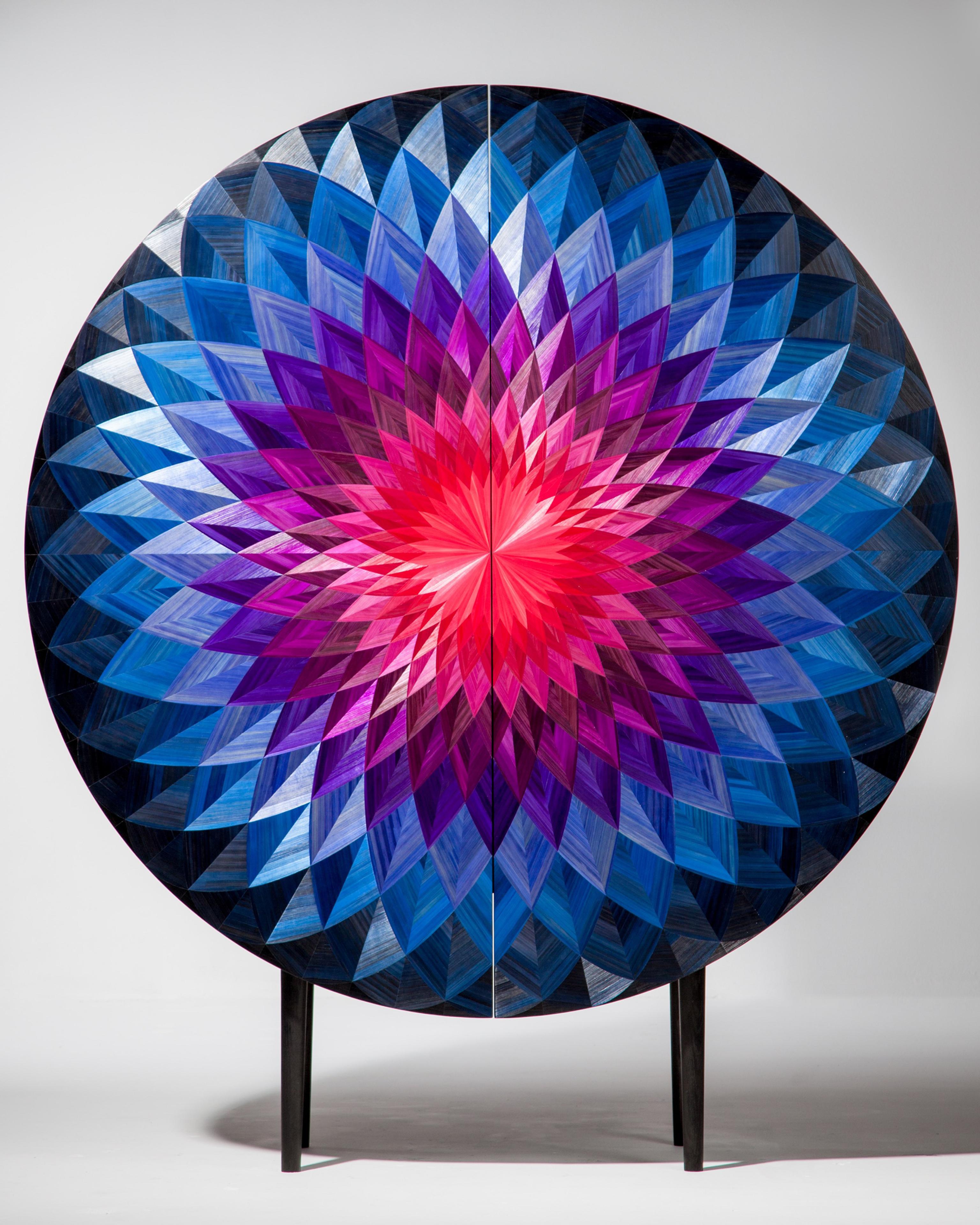
A&A 'Bloom' 2018, image by Josh Purnel.
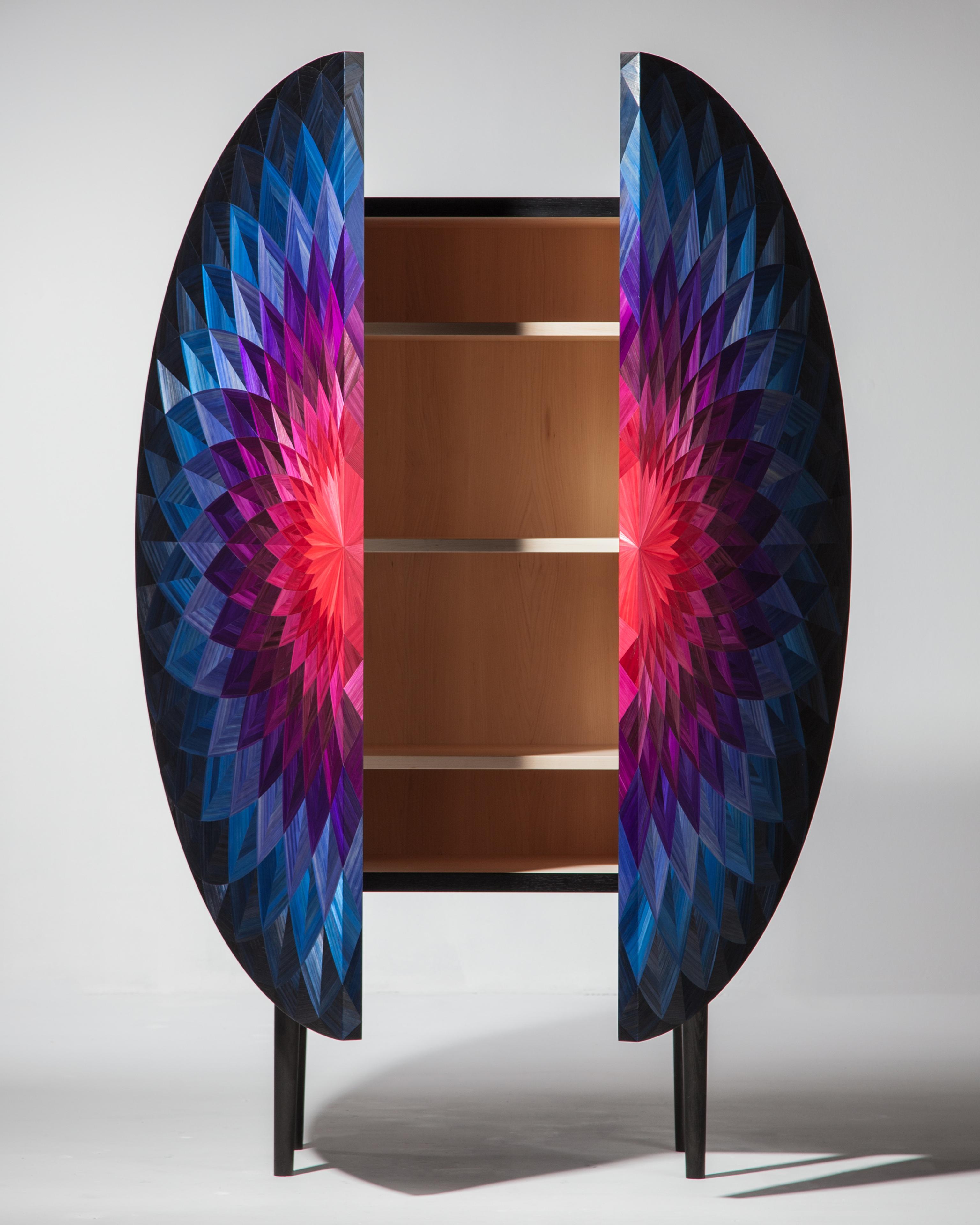
A&A 'Bloom' 2018, image by Josh Purnel.
OJ: So where did the partnership go from there?
AG: From there, Emma Elizabeth from Local Design reached out about an exhibition in Milan which was held in the city during (Furniture) Fair time. For that, we created the Bloom Cabinet which we showed under Local Design. That was the first time we called ourselves Adam & Arthur and we were lucky to receive lots of feedback from it.
We then brought it back to Australia and showed it with Dale Hardiman back when he used to run Friends and Associates and off the back of that the NGA acquired it and we were introduced to Tolarno Galleries which began representing us the following year.
In 2020, we created our Exquisite Corpse collection which was very ambitious for us. They were very complex pieces and we made three of them. It was a massive amount of work to have ready for Tolarno.
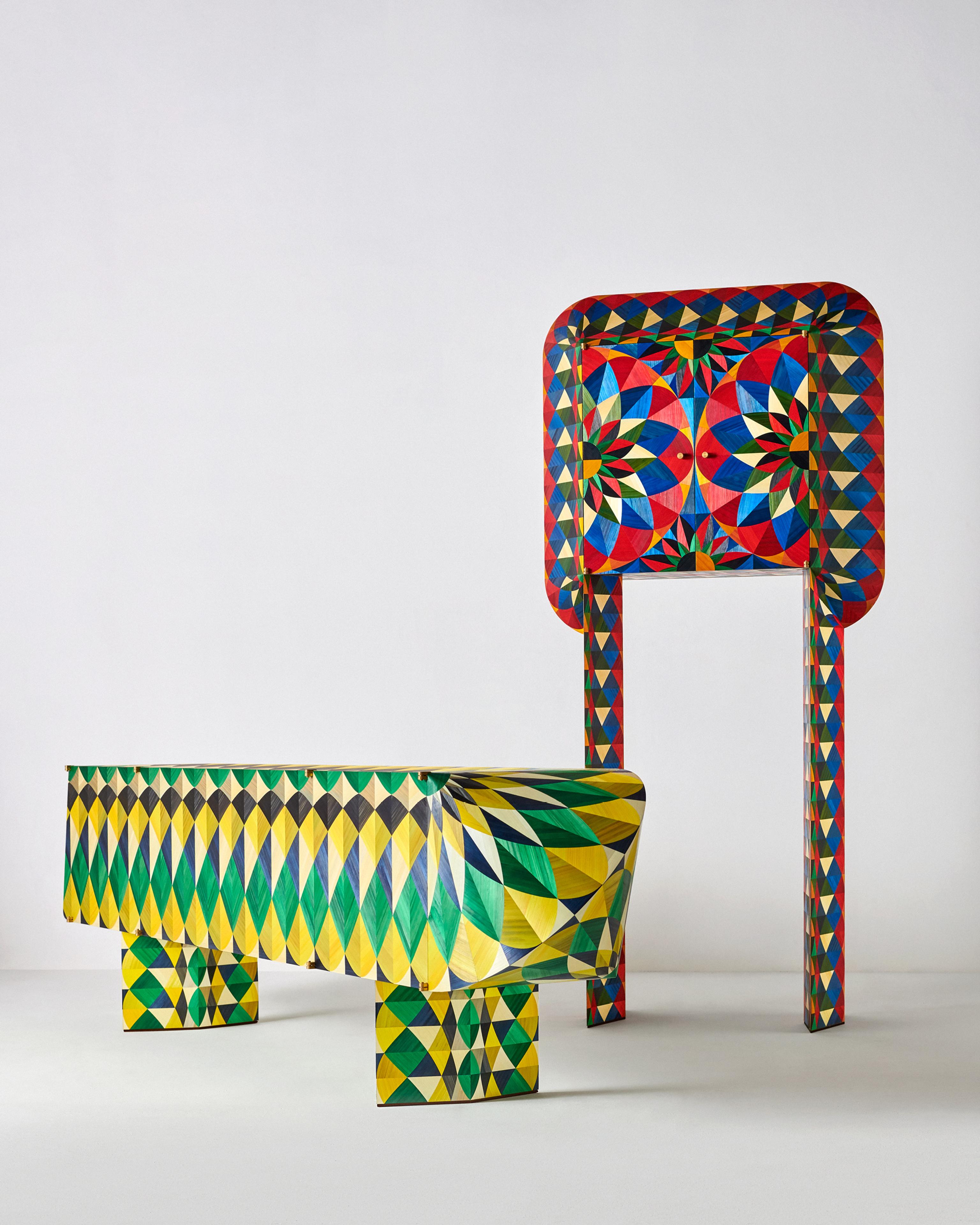
A&A,'Exquisite Corpse Collection' 2020, image by Victoria Zschommler.
OJ: Where did the ‘Exquisite Corpse’ name come from?
AG: It came from our back-and-forth process. Do you know the game when you have a piece of paper and someone will draw the head, and then you do the two lines for the neck and fold the paper over? The next person then draws the next bit of the body…
OJ: Oh yes! I never knew it was called ‘Exquisite Corpse' though!
AG: So we just wanted to communicate our process. That we were two very different people but we had this back-and-forth process. In the game, you end up with this thing that you would never have created yourself. Individually, we would never create the pieces we do as A&A. The sum is greater than two parts.
OJ: Tell me a little more about the marquetry technique employed.
AG: Well, generally with straw marquetry, because it’s such a laborious process it’s usually reserved for the front panel of a piece of furniture rather than every face. Normally you’d also apply it to a flat surface and use only a reserved palette of two or three colours. So we threw all that out the window. All the pieces have curves. We applied the straw to every surface. To get the straw onto the curves, we were having to play with different techniques to do something that hadn’t been done before.
OJ: There is a definite element of risk in navigating new creative territory. And I imagine a lot of pressure in taking such a culturally enduring technique into a new place. There must be so much time, energy and labour invested into something that is largely guesswork. I wonder, are you in close communication with Tolarno throughout the creative process? Do you worry that they might turn around at the end and say “This is totally not the direction we were expecting” and perhaps aren’t able to support it? How does that all work?
AG: Jan at Tolarno is so encouraging and supportive. She leaves us largely to our own devices. I create renders and things so she has an indication of the final outcome but I feel very fortunate that we get so much trust and creative leeway.
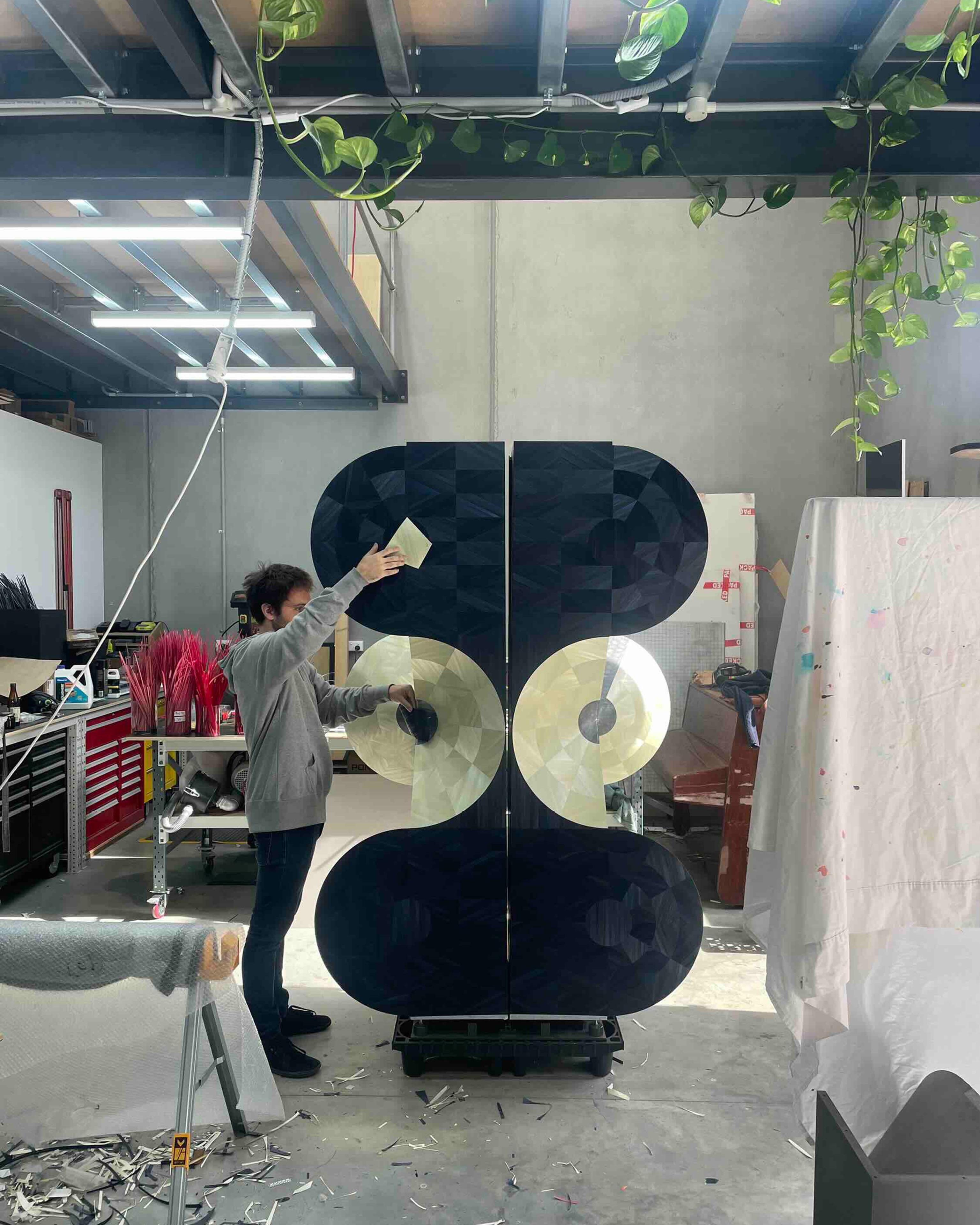
OJ: I mean, you and Arthur have established yourselves as extremely proficient artisans and designers over the past 7 years but, amazingly, the relationship you have with a gallery is so trust-based.
AG: Arthur and I actually talk about that a lot. We say “Goodness, is Jan going to like this? Is it appropriate for their mailing list?” And you’re right in that, I mean a painter for example, who has 30 years of experience to be able to put their oil and brush on a canvas and do their thing across a few days. But for us, it could be 3 months to a year’s work. So there’s this incredible risk that we do all this work to then not sell. It’s incredibly scary and quite daunting, to be honest.
OJ: Looking at your Exquisite Corpse Collection really drives home the immense level of risk.
AG: Yeah. And there’s been no agenda at all. Just a very fortunate collaboration driven by endeavouring to do things that challenge us and fortunately we’ve had a level of success in that people have bought the collection which has allowed us to keep growing. We feel very very lucky.
OJ: And without that risk, trust and a strong element of inquiry-based play it may never have got to where it did.
AG: I think if we got together at the beginning and said “Hey, we want to create a business and we want to be doing XYZ in 5 years” and put all this pressure on ourselves it mightn’t have happened. But we’ve been very fluid and agile and, beyond the creative collaboration, for whatever reason Arthur and I just get on really well. It’s just become another part of our lives that we have this friendship.
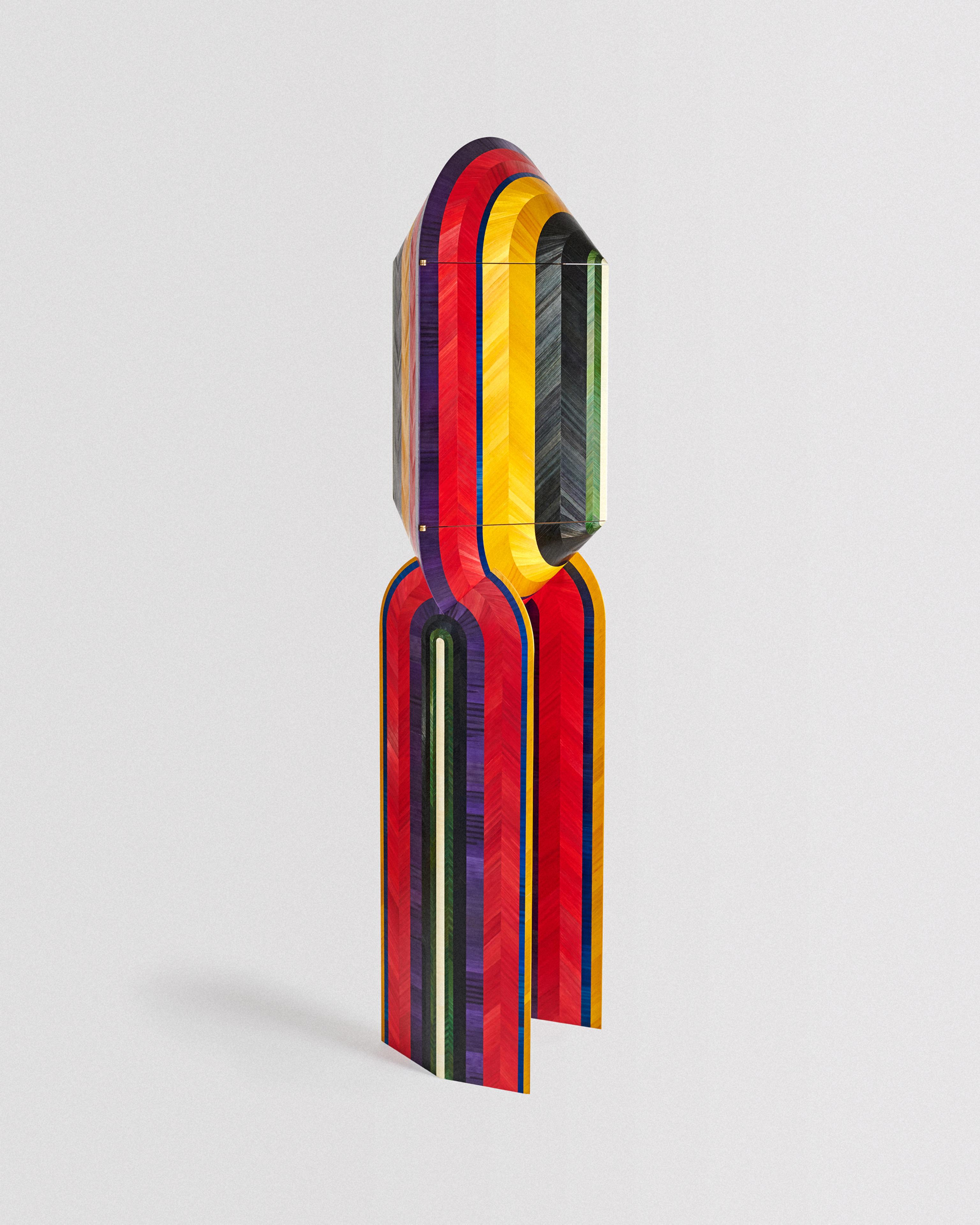
A&A 'Klaatu' 2020, image by Victoria Zschommler.
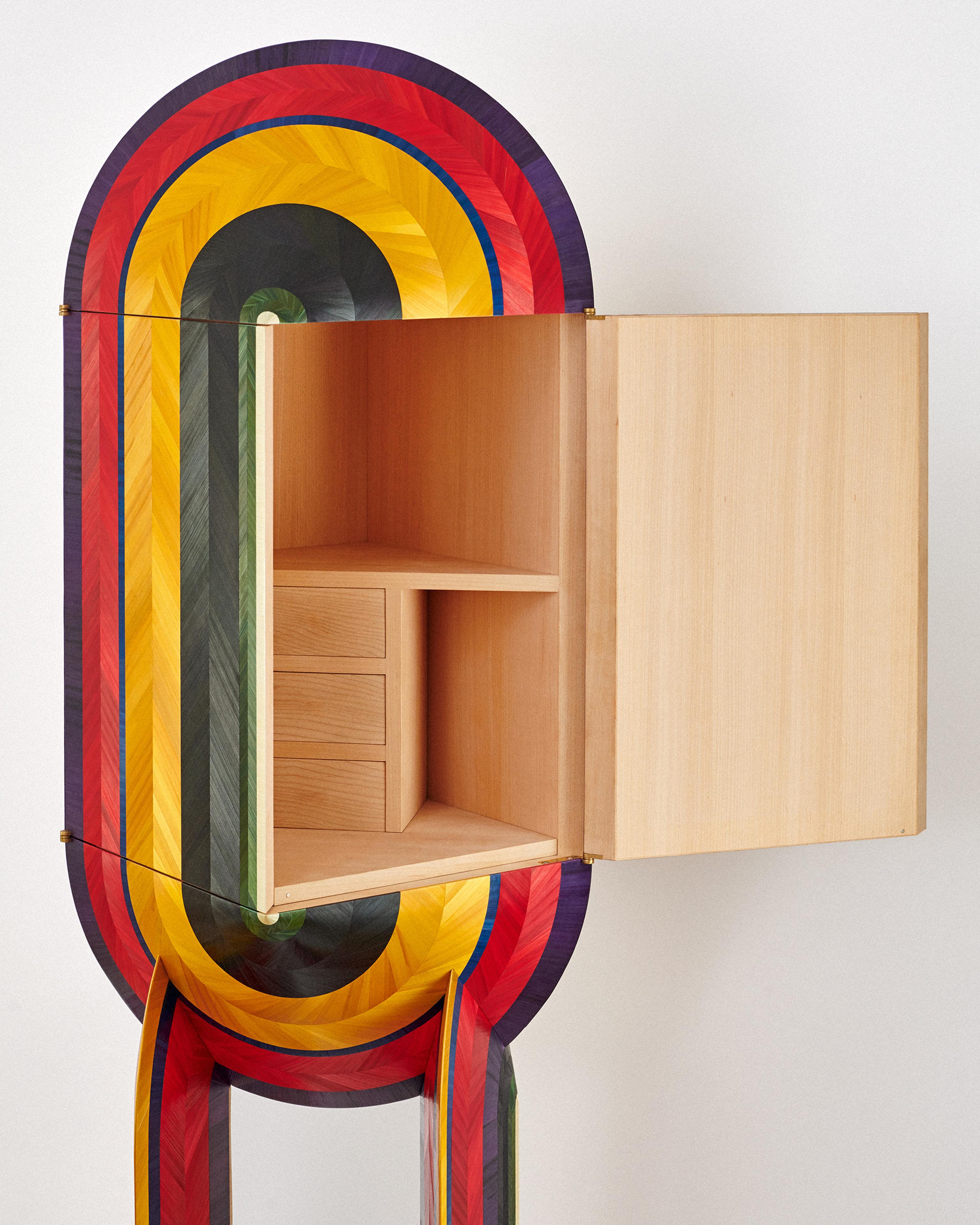
A&A 'Klaatu' 2020, image by Victoria Zschommler.
OJ: You’re very privileged. So how did Exquisite Corpse lead to the Kissing Cabinet?
AG: In 2020, Exquisite Corpse won the Créateur Design Award in New York. It was a big leap for us in the collectible, high-end genre. The year after that, COVID hit and I couldn’t get down to Melbourne but we still managed to create the Klaatu cabinet which the NGA acquired. Then we did a collection called Mother and Child which was shown at Melbourne Design Week 2022 and won the Dezeen Award for Furniture Design of the Year. After that, we did a small exhibition of three pods called Florescence which was acquired by private collectors. Finally, we presented the Kissing Cabinet which is 100% our most ambitious project to date and introduces a kinetic component to our work. There’s a mechanic underneath that it rotates on.
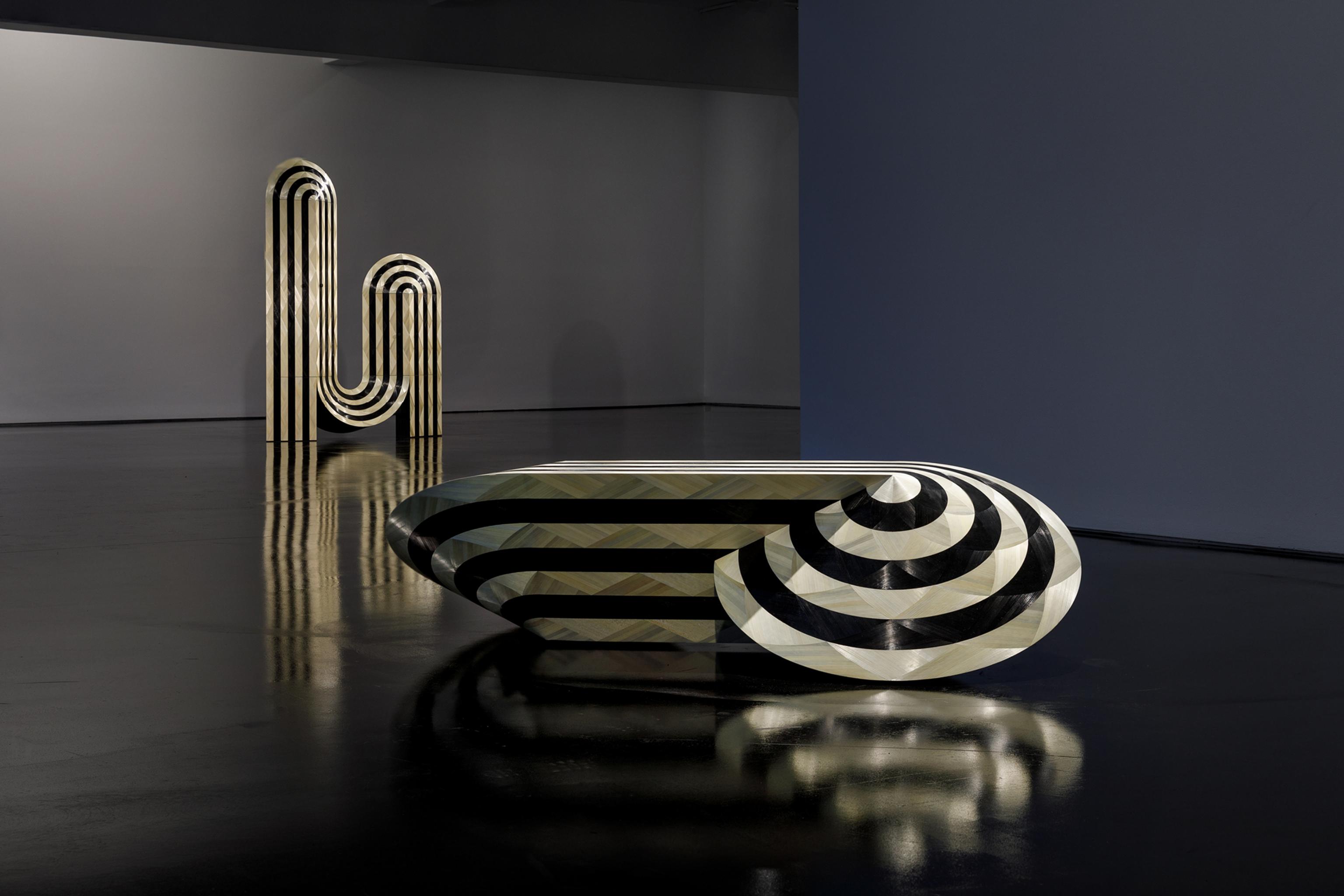
A&A 'Mother and Child' 2021-22, image by Andrew Curtis.
OJ: Did you create that, drawing on your industrial design background?
AG: I didn’t create it although I did have the initial idea for it. We were going to work in Australia for it but the quote just for that mechanism was insane. And then Arthur’s very clever father knew someone in Paris who ended up working on it for a much better price. It was the son of the author of The Little Prince. He makes watches for a living normally!
OJ: I’ve heard that it can be quite debilitating to try to have things made in the creative context in Australia. Is that something you’ve found often?
AG: It’s really hard here. We just don’t have a huge amount of people who master the artisanal techniques so there’s no competition to keep prices down.
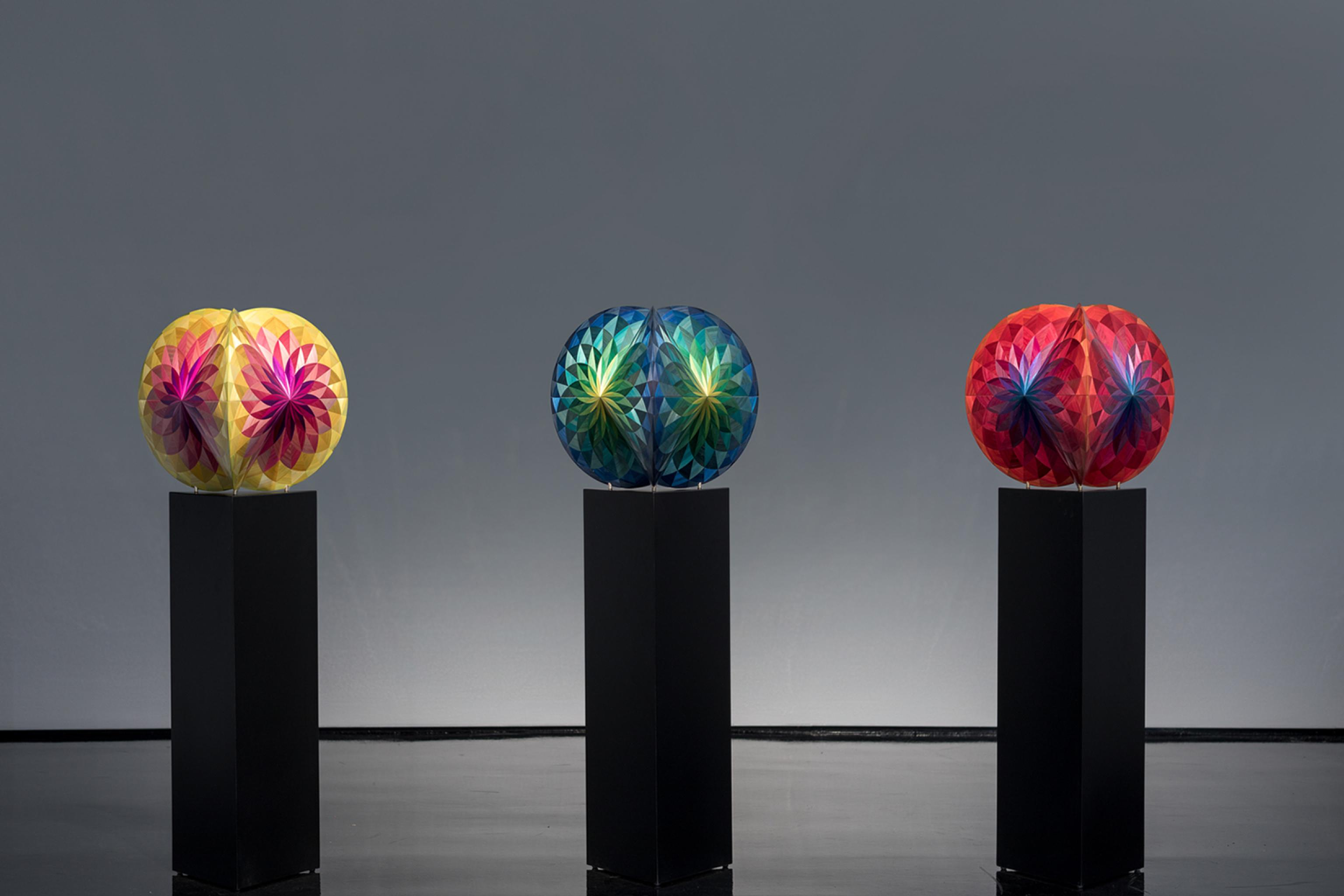
A&A 'Florescence' 2023, image by Andrew Curtis.
OJ: I understand that artisanal techniques occupy a niche. I understand that there isn’t a huge market, but Australia in particular seems so invested in going forward and innovation, which is ironic really as so much progression comes from evolving and learning from old practices, that there is a distinct lack of truly unique artisanal evolution.
AG: If you were in France or Milan and wanted an aluminium section for example, you would have all these options for where to obtain it. But in Australia, you have maybe one place with limited options. We are just so reduced with what is available. The flip side to that is that we have to be more resourceful so we have to look at things differently. I think that’s why Australians are generally more well-equipped. You have to be more lateral in your thinking and approach.
Interestingly, as another point, when Arthur moved here seven years ago, straw marquetry as a practice was relatively unknown. Recently though, we’ve had to get help for Arthur to lay the straw quicker and it’s been really hard to find people because no one else does it here. We’ve had people work for us but they come from Paris and their visas only last so long. But, after the last exhibition, we had a university lecturer saying “We’ve been studying your work and your latest pieces.” We’ve had two different parents come in to say that their children have been doing straw marquetry after class. It’s because of Arthur all this stuff is happening! So now we’ve been in contact with a lovely teacher who couldn’t find rye straw, so she found wheat straw in the supermarket, learnt how to dye it herself and is now teaching her students. She said that all her challenging students who can never focus were really into it. I just find that unbelievable. If Arthur had never come to Australia, that wouldn’t be happening.
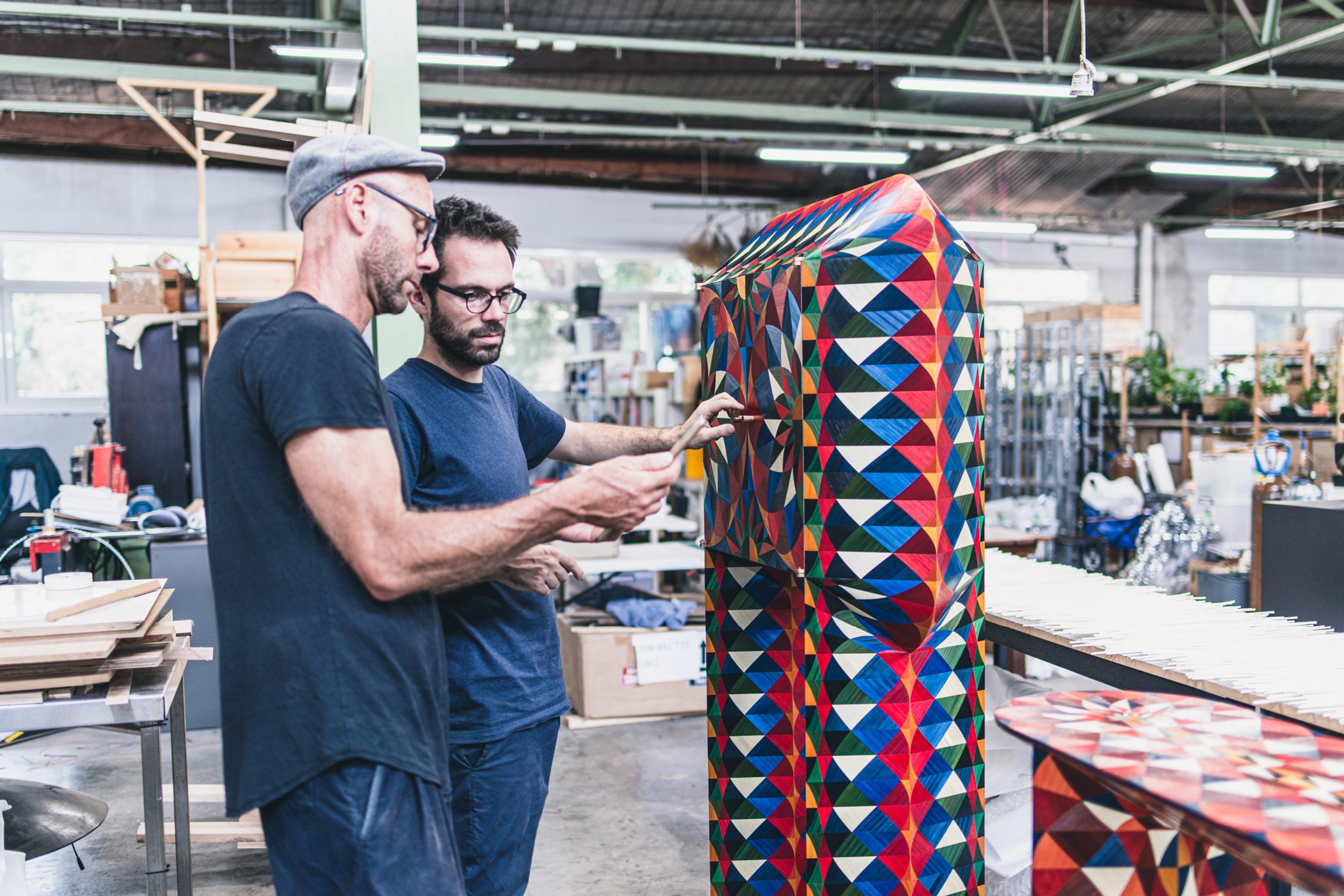
OJ: That’s incredible!
AG: Straw marquetry is inherently really slow and can’t be sped up. To do the work we want to do we’ve been combining it with technology to be able to do really complex things with amazing accuracy.
OJ: That’s exactly what I mean about innovation that dovetails with age-old skills. Cross-pollinating the two if you will to come up with something else entirely.
AG: The craft is so relevant, it just has to evolve. Even the cultural lend of Arthur coming to Australia has meant that, given he’s trained traditionally, these whacky, flamboyant colours and shapes we use, it’s only here where the culture isn’t ingrained, that he has this freedom to extend his work. It’s such a cool analogy for Australia. That if Arthur had stayed in France, he wouldn’t be doing what he is.
OJ: The lack of a long, unified, cultural heritage here in Australia, one that draws Indigenous skills into the creative vernacular, definitely instils a sense of freedom, allowing us to borrow from other cultures to intertwine techniques and devise something new.
AG: I think in Australia, previously architecture and design clients would say they wanted to use Australian designers but they just wouldn’t. They’d still pick the lovely brands from overseas. But now, there’s a real shift, a real appetite for Australian design. It’s amazing what’s happening. Even years ago, back when I was younger we’d all be jumping on planes to see what’s happening everywhere else but the younger generation today are all largely staying put. It’s got a long way to go but it’s come so far.
OJ: That’s a very hopeful place to have to finish up this interview. Thank you so much for taking the time to chat!
AG: That didn’t feel like an interview at all! It’s so nice to have a chat! Thank you.
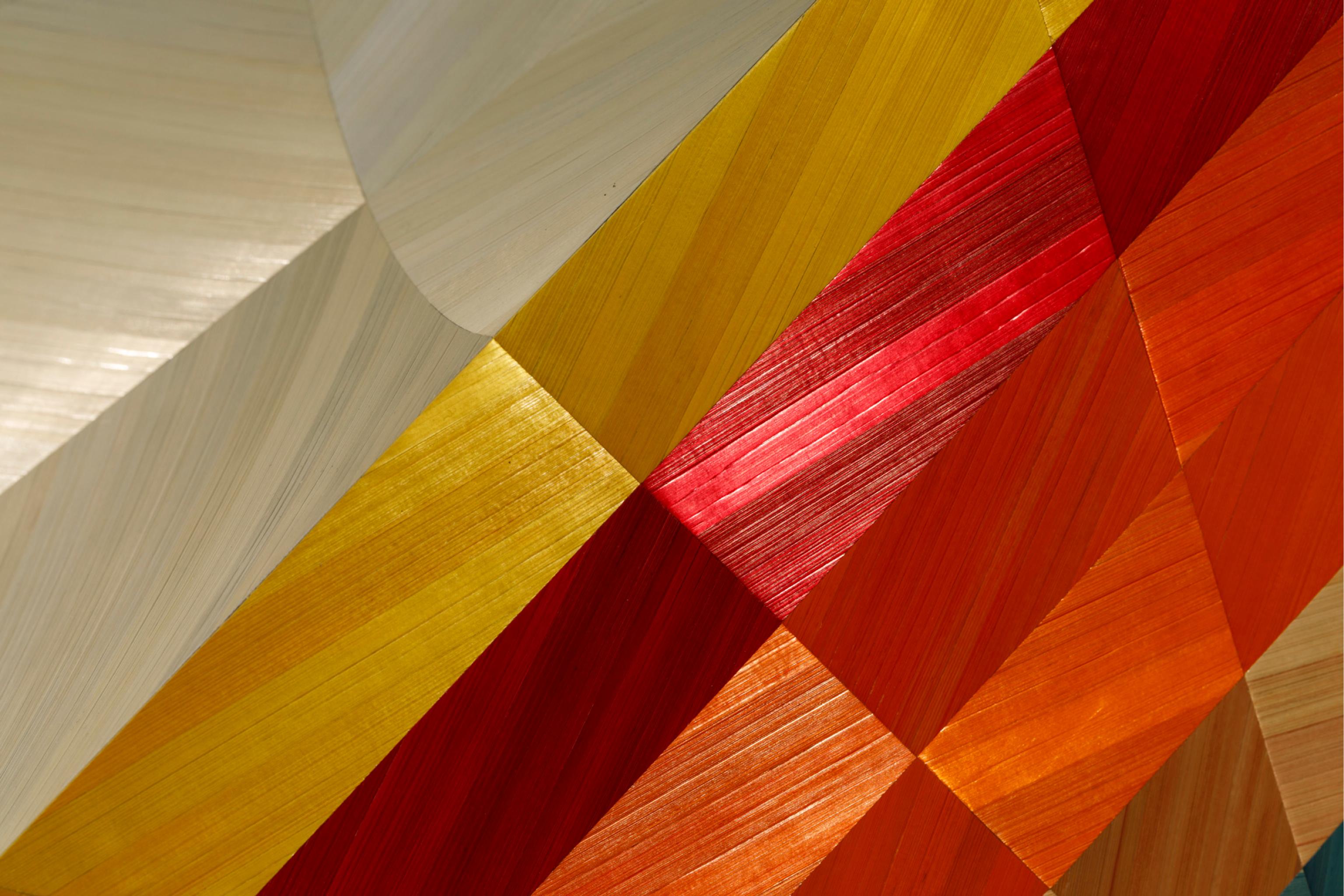
A&A ‘The Kissing Cabinet’ 2024, image courtesy of Tolarno Galleries.
A very special thanks to Adam Goodrum. Find out more about Adam & Arthur on their website and Instagram. Interview by Tiffany Jade. Feature image by Pier Carthew.

